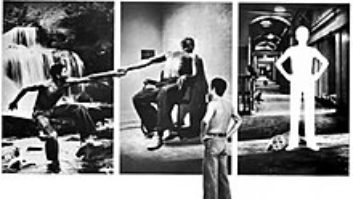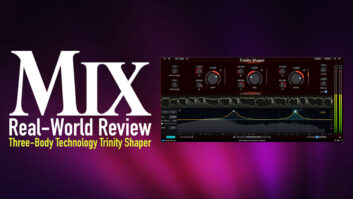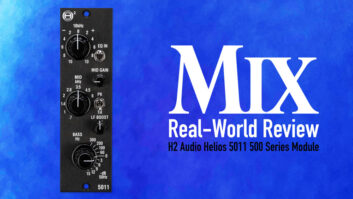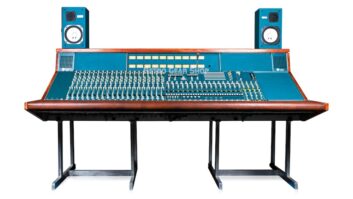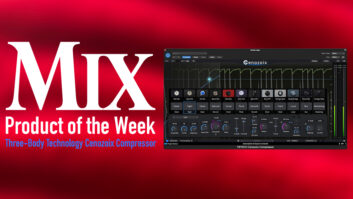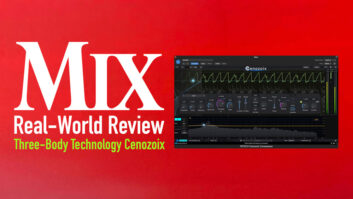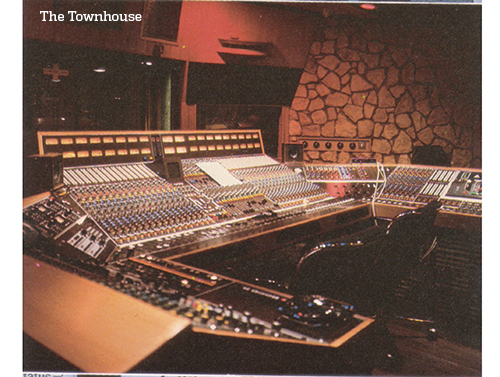
Liner notes. That’s where it started for so many of today’s engineers and producers. Later, in their teens, they would pick up a guitar or cart around drums, get a gig and wind their way into the studio, never to leave. But it really began with the music on the records of their youth; the “sound” of those records, as varied and dynamic as the range of recorded music, is what sucked them in.
When today’s music fan waxes nostalgic about liner notes, it’s typically about the artwork, the tactile sensation of vinyl or the sometimes-included lyrics. For many of today’s engineers and producers, at least those who came of age in the 1960s and ‘70s, it was about the credits. There it was: Engineered or produced by people like Tom Dowd, Rudy Van Gelder, Cosimo Matassa, Bill Putnam, Phil Ramone, Bruce Swedien or Al Schmitt. There was a career in recording, the credits said.

With the British Invasion came names like George Martin, Glyn Johns, Andy Johns, Eddie Kramer, Geoff Emerick, Keith Grant, Roger Savage, Alan Parsons, Gus Dudgeon and countless others, on records by The Beatles, the Stones, Hendrix, Clapton, Zeppelin, Floyd, Queen, Mike Oldfield, the Who, Traffic, Procol Harum, the Small Faces, The Moody Blues, Deep Purple, 10cc, Steve Winwood and so many others. And there, buried in the credits, if you looked close enough, you would find that a great part of our musical heritage from the Golden Age of Recording, especially out of the UK, was recorded and mixed on a Helios console.
How and why an audio product takes on legendary status, coveted worldwide across generations, depends on so many factors: simple timing, available technologies and materials, getting it in the right artist’s and engineer’s hands, and, of course, a baseline of impeccable quality and musicality, among them. There were fewer than 50 Helios consoles built between 1969 and 1979, and only about 20 remain intact, the others parted out as modules long before channel strips or 500 Series units became popular. They are prized and they are not cheap. Of course they have been emulated, cloned, resuscitated and rebuilt in many ways and forms over the years. The legacy only gets stronger.
This, then, is the tale of three of the original desks, the Branson Boards, purchased in the mid- to late-‘70s by Richard Branson for his booming Virgin Records properties known as The Townhouse, The Manor and Manor Mobile. All three are in the U.S. today; all three remain intact—one very much alive and working every day at Shorefire Recording Studio on the Jersey Shore, another nearing the end of a two-year restoration in Nashville, and the third under plastic in a climate-controlled warehouse near Burbank, looking for a revitalization and a loving new studio home.
The Helios Legacy
Before talking about the desks themselves, a very brief history is in order. Dick Swettenham is Helios, plain and simple, though he would surely share the credit with others, including Keith Grant and his Olympic tech team, were he alive today. One of the great, yet largely unrecognized figures in professional audio, Swettenham was a British tech and engineer with reportedly as much character as genius. He came of studio age back when facilities built their own equipment, and he was at Abbey Road during the design of the REDD Series before moving to Olympic Studios in the mid-1960s and building a revolutionary new wraparound design (suggested by Keith Grant), with electronics based around Lustraphone transformers and germanium transistors. Three were built for Olympic, and word got out quickly.
As the legend goes, Chris Blackwell wanted some of the Olympic magic for his relatively new Island Records, but as he was still an Olympic client, it was awkward. So he helped to finance a startup for Swettenham, who named the new company Helios. Blackwell would eventually order seven boards, though the first one built went into Olympic Studio 2.

Many more orders followed quickly, including for the famed Stones Mobile, Eric Clapton, Apple Studios, and the first of the Branson Boards, which he put into Manor Mobile. The early desks incorporated the revered and much-desired Type 69 EQ, which is considered the most musical of the designs and the first to be cloned; the later boards had the Type 78, considered the most versatile. Each desk was unique, many with a signature style or look; some even acquired nicknames like Red, the Love console or Big Brownie.
By 1979, Helios was out of business. In 1988, Tony Arnold, who had developed a penchant for the electronics and had been servicing those in use, began purchasing a few that came on the market but needed care, and with Swettenham’s blessing acquired the trademark, re-opening Helios Electronics Ltd. in 1988. The first board Arnold purchased was the last one that Swettenham built, for Branson’s The Townhouse studio in London. Today, that board is the centerpiece of Shorefire Recording Studio in New Jersey, and it’s still working every day. We’ll start there.
Townhouse to Shorefire
“I grew up in the ‘70s, so that was the soundtrack to my childhood, and I began to notice that Andy Johns’ name was on all the records that I loved,” says Joe DeMaio, owner/operator of Shorefire Recording Studio, a two-room facility in Long Branch, N.J., one block from the Atlantic. “Years later, a friend who knew Andy got us on the phone and he said it was these consoles, these Helios, that made the sound of those records. So I always kept that in the back of my mind, and around 1989, through a vintage gear dealer in the UK named Nick, I was able to buy two modules from the original Island board.”

In many respects, DeMaio represents the heart and soul of recording in the U.S. over the past three decades. He read the liner notes, picked up guitar at age 9 and booked his first studio session at age 16 (“It was Shorefire,” he recalls, with a laugh, “and it came out so bad!”). By his early 20s, in the early ‘80s, he was working on a 4-track Portastudio and engineering local bands, live and studio.
In 1995 he purchased the two-room Shorefire facility, which was founded in 1977 and had an MCI 600 board. He has made a go of it regionally, with a bit of national work, ever since. In the late 1990s, he got word that several Helios desks were purchased from Tony Arnold, and brought to America. And a Helios console was in storage and for sale at SST in nearby Weehawken, N.J. DeMaio picked the Townhouse desk, dubbed “Big Brownie” by Arnold, with its 40 inputs, 32-bus monitor section and two stereo returns.
“I bought it without hearing it, from storage,” DeMaio says. “I was horrified. There was lots of dust, a couple modules had been ripped out, and somewhere along the line, someone had cut the wiring looms completely in half! I hooked up with a tech named Ken McKim and we got the right parts, got the power supplies back in shape and rewired it entirely.

“When we finally flipped it on, I was surprised at first; it didn’t sound anything like the modules,” he recalls. “It was more hi-fi sounding, more in your face, and it has this sweet top end, so smooth-sounding and open at the top, with a full-frequency spread across the bottom. Those are the different transformers. Not colored. Very transparent and open.”
DeMaio has Pro Tools and plug-ins, vintage mics and new ones, boutique amps and modern pedals—a nice blend of the old and new across the board—but he most prizes his centerpiece, tracing its lineage from The Townhouse (1978-84), to The Who’s Ramport Studios (1984-89, at the time owned by Virgin), then to Arnold, then to SST, and finally Shorefire. “I feel very lucky that I’m able to have this desk intact, not in parts,” he concludes. “It has seen so many big records. Adam Ant did Friend or Foe on it. Queen did the soundtrack to Flash Gordon on it. Peter Gabriel, Phil Collins, so many others. And I just love the way it sounds.”
Manor Mobile to 16 Ton
Growing up in the tiny southern Indiana town of Palmyra in the 1970s, surrounded by cornfields, Danny White remembers Paul McCartney’s Ram as the first time he was aware of “Helios,” with full consciousness arriving with Houses of the Holy and the name Eddie Kramer. It would be another 35 years or more before he would actually see one of the desks in person.

Picking up the bass, playing in local bands, a Portastudio in the early 1980s recording demos and live gigs through Indiana, Ohio and Kentucky for 15 years—always keeping the dream alive. In the mid ‘90s he found some success with the Peacemakers out of Phoenix, and got the full recording bug while filling in at Vintage Recorders studio during his time off the road. When the studio closed, he bought the gear and opened Formula One studios. A few years later, in the early 2000s, he moved to Nashville and opened 16 Ton on Music Row.
Rather than buy a used SSL or bring his Trident A Range east, he decided to build his own tube-based one-off console with partners Steve Firlotte and Ian Gardiner. They called it Dymaxion. Nashville thought he was nuts, but it helmed hundreds of sessions over a decade on the Row. Firlotte and Gardiner went on to form Tree Audio.
“I’ve always been a tinkerer, fascinated by electronics,” White says. “For me, the Helios was like the Loch Ness Monster of consoles. I’d heard of them all my life but never seen one. Then about three years ago a buddy of mine, producer Dave Cobb, called me and said, “Look, I bought this Helios console from David Kean in Calgary. The Manor Mobile board, the first one Richard Branson bought. I’m gonna restore it.’ Then he got really busy and couldn’t wait for the restoration, so he bought the Love Helios from Kevin Kadish and put it in his Nashville studio. It’s flat out killer. One of the best consoles I’d ever heard. Then Dave says, ‘I’m not gonna restore this Manor Mobile console. Do you want to buy it?’ Inside, I’m thinking, ‘Absolutely.’ Outside, I’m saying, ‘No way am I doing that.’ It needed a complete restoration. It would be expensive. Everything was there but the EQ modules.”

A year later White bought the console and began a two-year, worldwide restoration effort, involving the team of Justin Herlocker in Nashville, Gareth Connor in the UK, Mark Owen of Elma Electronics in Switzerland, Kenny Varga for woodworking in Nashville, and David Kean of The Audities Foundation in Calgary, Alberta, who ended up loaning an original Manor Mobile module to replicate.
“We found the original transformer design, which had to be hand-wound in England,” White explains. “The EQ inductor designs all had to be hand built. Find all the right switches. Re-create the woodwork. The footprint is identical to what it was, a 30-input desk in a mobile truck. But we have added removable wings for patch bay and outboard gear. This is 2015, and for me, it’s about what works today.”
The modules are now being final-assembled in England, the wiring is being done in Nashville, and the board should be finished this summer, bringing back the ghosts of AC/DC, the Grateful Dead at the Pyramids, Little Feat Waiting for Columbus and CSNY at Wembley, 1974. Meanwhile, after a decade on Music Row, White has closed 16 Ton and moved to Temecula, Calif., where he just launched Palomar Audio, the first product in development being a 500 Series unit based on the Manor Mobile Helios.
The Manor to ?????
Our final Branson Board, at 62 inputs and hailing from The Manor, is said to be the largest one ever built. For the past 15 years, it had been sitting under plastic, fully assembled, in a climate-controlled warehouse outside of Los Angeles. It resurfaced late last year when owner Dan Schwartz contacted Pepper Denny, one of the more colorful characters in retail with an attraction to rare and special-interest gear, and asked if he would help broker a sale and find the board a home, ideally intact.
Denny owns Pepper’s Pro Shop in Nashville. He was trained in jazz bands and today is the drummer in Blooddrunk Shenanigans, still touring and recording. He’s been a studio owner, recorded location sound for film, and he’s had a 15-year history in retail with Westlake, GC and Vintage King. He’s a hustler, no doubt, and he’s an acquired taste, he freely admits. But he gets things done; he knows a lot of people and he knows how to connect those who are like-minded. On that first phone call with Schwartz, he warned him that a sale might take awhile. It’s an eclectic piece in a semi-tough market. There might be only 100 or so people in the world who would be considered serious customers. Schwartz asked him to come see it in January, after the NAMM show.
“It looks beautiful,” Denny says. “Of course it will need to be serviced and recapped and everything because Dan told me it has been sitting there for about 15 years. But it’s in great shape. Sixty-two channels of awesomeness! It’s like a dream console, one that nobody thought still existed. It’s like a museum-quality piece that should be used. It was not mass-produced. Dick Swettenham and his team built them by hand, to order. He designed it, and it’s his mark on the console that makes them what they are. I want to sell it and then go in and record on it!” [Laughs]


The Manor Helios lived in the Branson studio until 1987, when it was decommissioned by Manor tech Paul Ward. It was later brought to the States by David Gordon, now of Josephson Engineering, who sold it to producer/musician Schwartz. The plans Schwartz had for it never quite materialized, as he spent a lot of time on the road. He ended up using only a few of the modules at home, building himself a small rack. After 15 years under plastic, the desk is ready to rock again.

